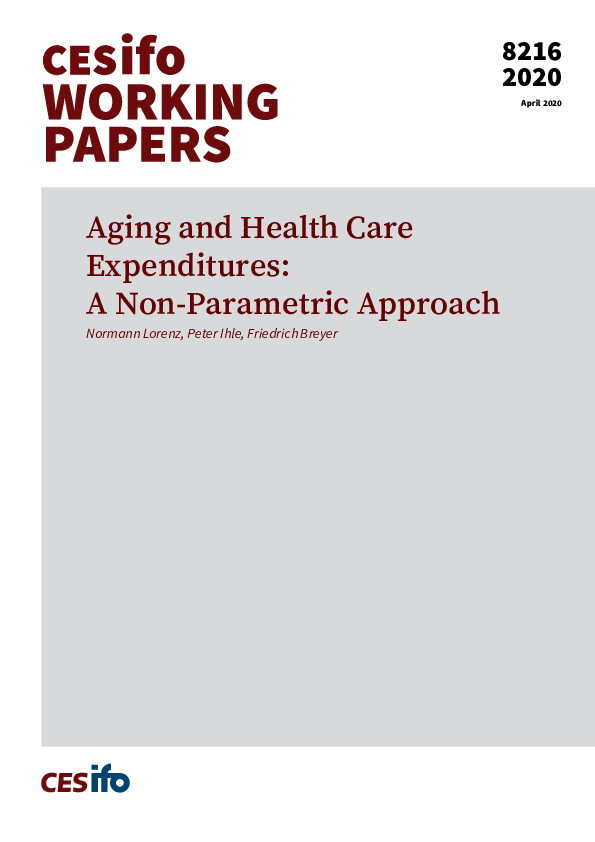Aging and Health Care Expenditures: A Non-Parametric Approach
CESifo, Munich, 2020
CESifo Working Paper No. 8216

One of the most important controversies in health economics concerns the question whether the imminent aging of the population in most OECD countries will place an additional burden on the tax payers who finance public health care systems. Proponents of the “red-herring hypothesis” argue that this is not the case because most of the correlation of age and health care expenditures (HCE) is due to the fact that the mortality rate rises with age and HCE rise steeply in the last years before death. The evidence regarding this hypothesis is, however, mixed. Our contribution to this debate is mainly methodological: We argue that the relationship of age, time to death (TTD) and HCE should be estimated non-parametrically. Using a large panel data set from the German Statutory Health Insurance, we first show that the parametric approach overestimates the expenditures of the high age classes and thus overstates the increase of future HCE due to aging. Secondly, we show that the non-parametric approach is particularly useful to answer the question whether age still has an impact on HCE once TTD is taken into account and find that it is clearly the case. This relationship is even more pronounced for long-term care expenditures (LTCE). We then show that the age-expenditure relationship is not stable over time: for many age classes, HCE in the last year of life grow considerably faster than HCE of survivors. We explore the impact of these findings on the simulation of future HCE and find that population aging will in fact contribute to rising HCE in the coming decades. We also find that the impact of different population projections provided by the statistical offices has a greater impact on these simulations than previously acknowledged. However, the total impact of demographics on future HCE and LTCE is dwarfed by the exogenous time trend, which is due to medical progress and increasing generosity of public LTC insurance.
Public Finance
Social Protection